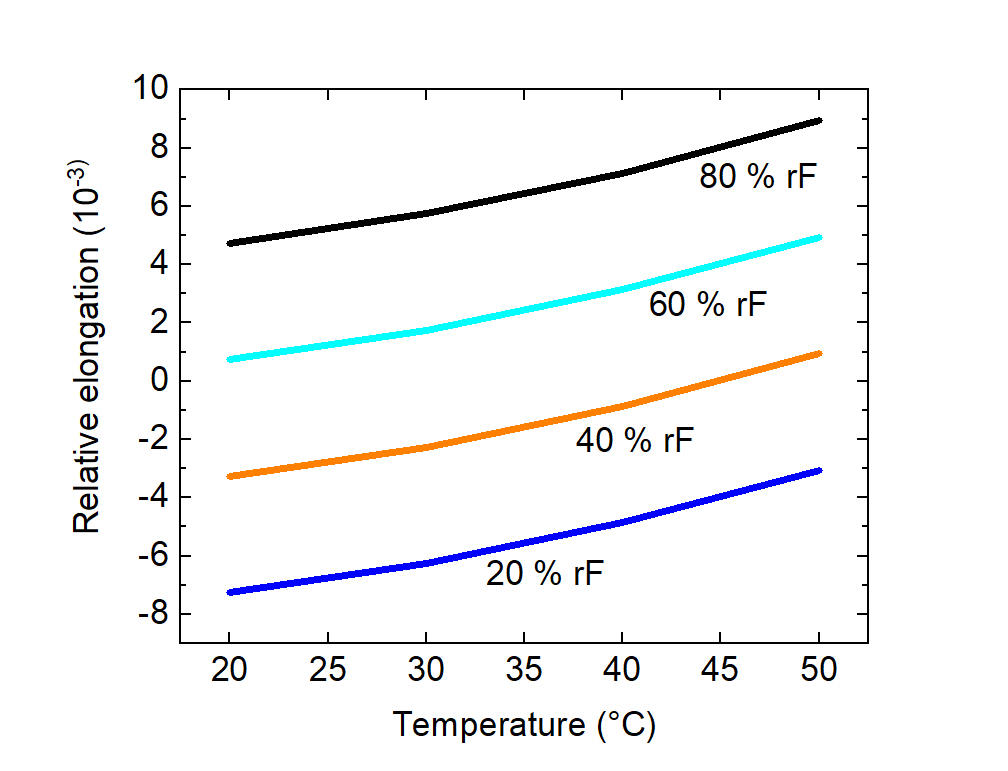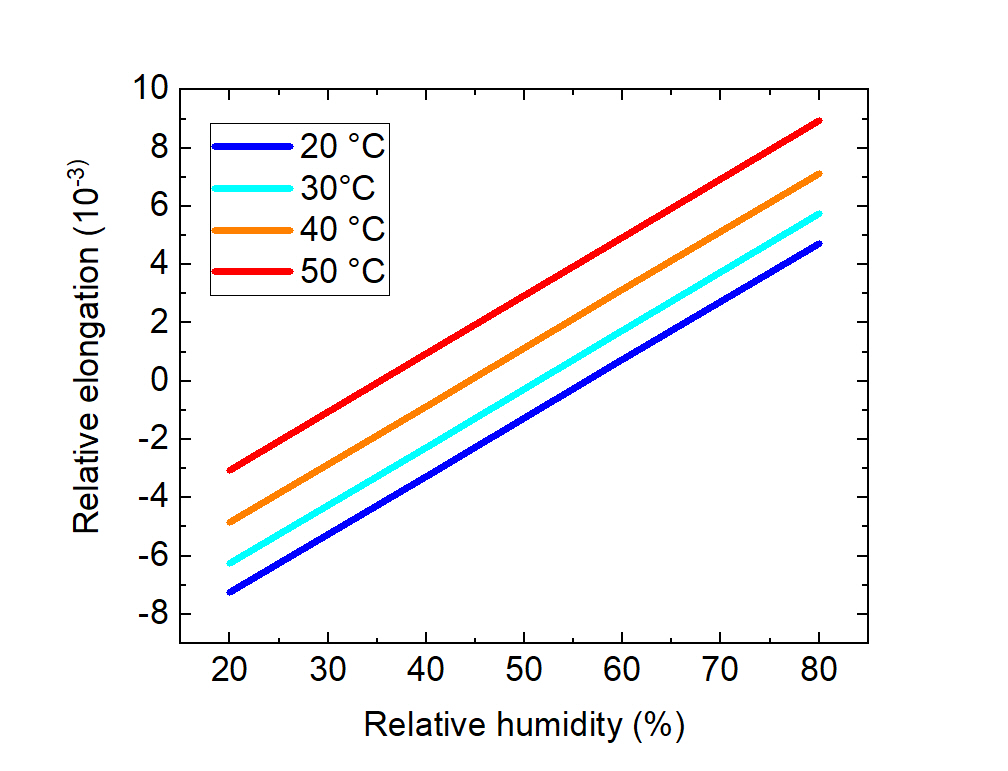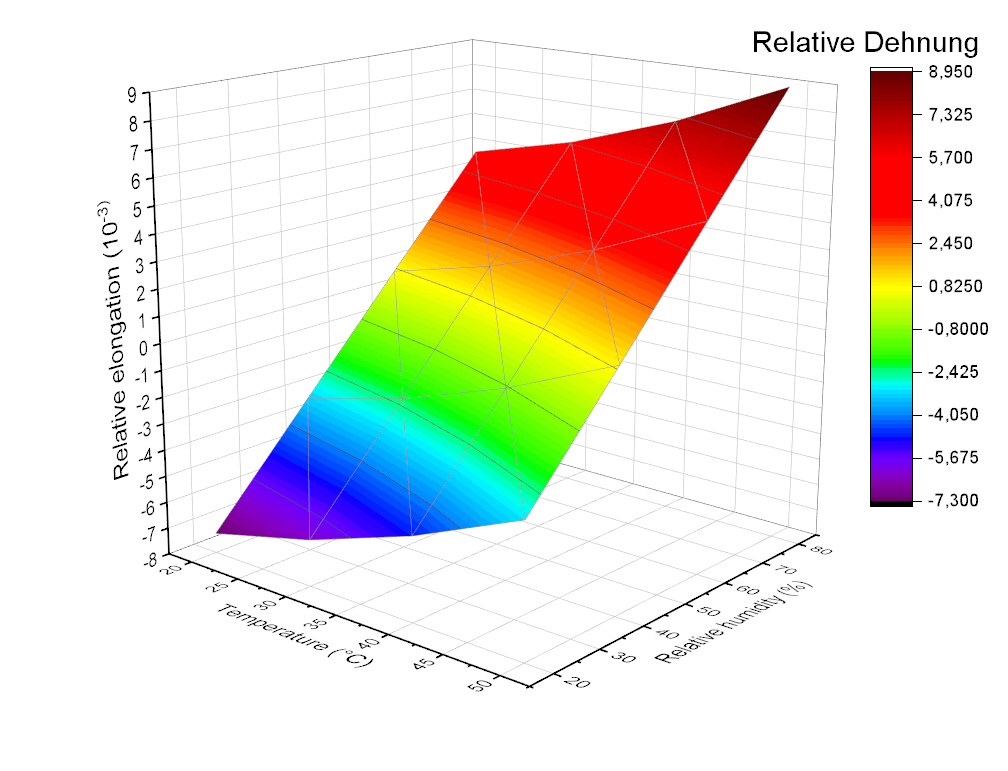
Thermal and hygric expansion

Plastics change their dimensions with temperature. The cause of thermal expansion is the average distance between atoms, which increases with temperature. In addition to the known thermal expansion, hygric (moisture-induced) expansion also plays an important role for plastics. The contact of plastics with moisture (e.g. through changing air humidity or water contact) leads to swelling and thus to a mostly reversible expansion and often to softening.
With the help of further development of measuring devices and special software algorithms, thermal and hygric longitudinal expansion coefficients can be calculated at the Fraunhofer LBF, which can be brought into a climatic longitudinal expansion function.
A measuring device with an air-conditioned sample chamber is available for this purpose. The thermal lenght change can be investigated from -140°C up to softening of the sample. Climatic investigations are possible between 10°C and about 100°C with relative humidities between 10% and about 90%.
Tabbed contents
Areas of Application
The determination of the expansion behaviour of plastics as a function of temperature and humidity or other organic solvents is of interest for all plastics applications that require high dimensional stability. For this purpose, the thermal longitudinal expansion coefficient (isohumic measurement) and the hygric longitudinal expansion coefficient (isothermal measurement) are determined. With these temperature- and moisture-dependent characteristic values, a climatic longitudinal expansion function can be determined. The substance data and material functions are used, for example, in FEM simulations and are necessary for stress calculations.
Typical areas of application for plastics with high dimensional stability are for example
- Design of membranes (water technology, fuel cells for electric mobility)
- Design of expansion gap
- Development of sealing plastic housings
Application Example
The upper figure schematically shows the thermal longitudinal expansion as expected for a hydrophilic polymer film for different isohumic measurements. In this scheme, the thermal expansion shows a weak temperature dependence, with absolute expansion increasing with increasing relative humidity. The middle figure schematically shows the course of the hygric expansion.
The combination of both analyzes – the climatic longitudinal expansion – is exemplarily shown in the figure below. With a corresponding temperature- and moisture-dependent analysis, the user receives comprehensive information about the expansions that a product experiences under different climatic conditions. Material functions created from measurement data can serve as input parameters for simulations and calculations.
 Fraunhofer Institute for Structural Durability and System Reliability LBF
Fraunhofer Institute for Structural Durability and System Reliability LBF

